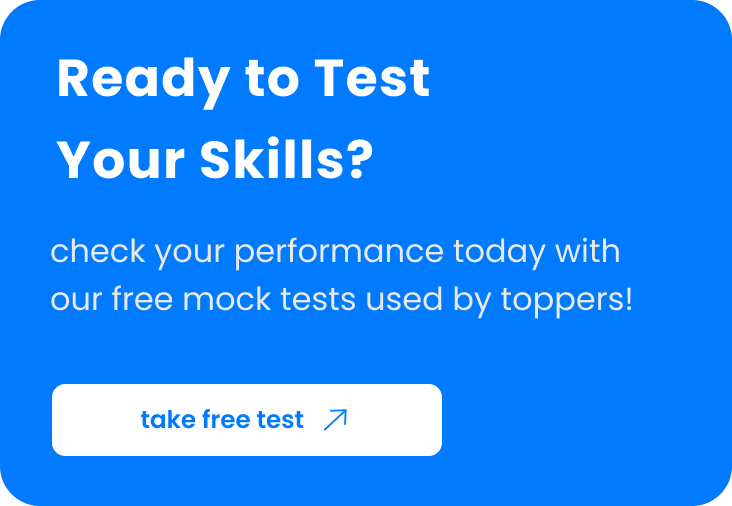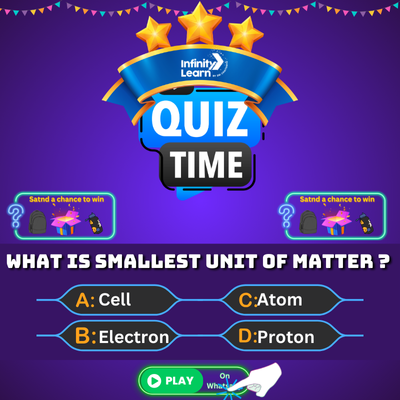Table of Contents
ADHD means Attention-Deficit/Hyperactivity Disorder. It is a condition that affects how a child’s brain develops and works. Signs of ADHD usually start before age 12 and may include fidgeting, having trouble paying attention, and often losing things. ADHD can be managed with medicine and therapy, which help control the symptoms and make daily life easier for the child.
Full Form of ADHD
ADHD stands for Attention-Deficit Hyperactivity Disorder.
What is ADHD?
ADHD stands for Attention-Deficit/Hyperactivity Disorder. It’s one of the most common mental health conditions found in children. Kids with ADHD may:
- Struggle to focus or pay attention
- Be very active even when it’s not the right time or place
- Act on impulse or do things without thinking
ADHD is a long-term condition that can make everyday life difficult. It can affect a child’s school performance, relationships with others, and daily activities (Harpin, 2005). If not treated properly, it may also lead to low self-esteem and problems in making friends (Harpin et al., 2016).
In adults, ADHD can show up differently. Adults with ADHD may feel bad about themselves, take criticism more personally, and often criticize themselves. This may be due to years of facing negative feedback from others (Beaton et al., 2022). But in this article, we’ll mainly focus on ADHD in children.
Also Check: List of A to Z Full Form
Symptoms and Diagnosis of ADHD
It’s normal for kids to have trouble sitting still, waiting their turn, or paying attention from time to time. But for children with ADHD, these challenges happen much more often and are stronger than what’s expected for their age or stage of development. Children with ADHD may:
- Be very restless or fidgety
- Have trouble focusing
- Act without thinking (impulsive)
- Struggle with organisation
- Have a hard time following instructions
These behaviors aren’t because the child is being disobedient or doesn’t understand what’s being asked. Instead, these are real symptoms of a brain-based condition that affects how they function at home, school, and in relationships.
Inattention Symptoms of ADHD
Children with ADHD may show signs of inattention, which means they often have trouble staying focused. You might notice your child:
- Avoids activities that need long periods of focus (like reading or homework)
- Misses details or makes careless mistakes
- Forgets tasks or chores they were supposed to do
- Gets distracted easily by sounds, people, or even their own thoughts
- Struggles to organize things like toys, school bags, or homework steps
- Has a hard time staying focused, especially during classes or while reading
- Loses things like schoolwork, books, or glasses often
- Appears to be daydreaming or not listening when spoken to directly
- Starts tasks but quickly gets distracted and doesn’t finish them (like leaving chores or homework incomplete)
Also Check: ADH Full Form
Types of ADHD
Doctors usually classify ADHD into four main types based on the symptoms a person shows. These types can be seen in both children and adults:
1. Inattentive Type (ADHD-PI)
People with this type have a hard time focusing, completing tasks, or staying organized. They usually don’t show much hyperactivity, which is why this type is sometimes harder to notice.
2. Hyperactive-Impulsive Type (ADHD-PH)
This type includes signs like:
- Constant movement
- Difficulty sitting still or being quiet
- Talking too much
- Acting without thinking
People with this type may not have many problems with focus.
3. Combined Type (ADHD-C)
This is the most common type of ADHD. People with this type have both inattentive and hyperactive-impulsive symptoms. They may find it hard to stay focused and also have high energy and impulsive behavior.
4. Unspecified Type
Sometimes, a person has serious ADHD symptoms that don’t exactly fit into the types above. In this case, doctors may diagnose them with “unspecified ADHD.”
Hyperactive/Impulsive Type of ADHD
This type of ADHD includes two main behaviors: hyperactivity and impulsivity.
- Hyperactivity means having too much energy. A person may fidget, move around a lot, not be able to sit still, or talk too much.
- Impulsivity means acting quickly without thinking about what might happen next.
To be diagnosed with this type of ADHD, a child must show at least six symptoms from the list below. For teens 17 and older, five symptoms are enough. These symptoms must happen often and in different settings, like at school and at home.
Common Signs of Hyperactive/Impulsive ADHD
Children with hyperactive/impulsive ADHD often show behaviors that involve too much movement or acting without thinking. These signs usually appear across different settings, like school, home, and during play.
- Often fidgets or taps hands and feet, or squirms in their seat
- Has trouble staying seated, like in class or during meals
- Often runs or climbs in places where it’s not allowed
- Can’t play quietly or do calm activities
- Always seems “on the go” or full of energy, like a motor that won’t stop
- Talks a lot, even when it’s not the right time
- Blurts out answers before a question is fully asked or interrupts others
- Has a hard time waiting their turn, like in lines or during group activities
- Often interrupts people or uses others’ things without asking
Combined Type of ADHD
The combined type of ADHD is diagnosed when a person shows symptoms of both inattentive and hyperactive/impulsive types. This is actually the most common form of ADHD.
How is ADHD Diagnosed?
ADHD is usually diagnosed by mental health professionals or primary care doctors. The diagnosis process includes a complete evaluation, which may involve:
- Talking with the child and caregivers about symptoms
- Filling out questionnaires and behavior checklists by parents, teachers, and sometimes the child
- Reviewing medical and mental health history
- Looking at family history
- Asking about the child’s education, environment, and upbringing
Doctors may also refer the child for a medical check-up to rule out other possible health issues.
Risk Factors for ADHD
While genes play a big role, certain environmental factors can also increase the chance of developing ADHD. These include:
- Exposure to toxins during pregnancy (like tobacco, alcohol, or lead)
- Low birth weight (the smaller the baby, the higher the risk)
- Being born too early (preterm birth)
These risk factors don’t cause ADHD on their own but can increase the chances if a child already has a genetic risk.
Possible Complications of ADHD
If ADHD isn’t managed properly, it can affect many parts of a child’s life. Without the right support and treatment, children with ADHD may face:
- Low self-esteem or feeling like they’re not good enough
- Poor school performance or struggling to reach their potential
- Social difficulties, like being left out or teased by peers
- A higher risk of substance abuse later in life
- More driving accidents or injuries when they get older
- Challenges with jobs, such as trouble finding or keeping work
Management and Treatment
The treatment plan depends on your child’s age and individual needs. If your child has ADHD, the doctor may suggest one or more of these options:
- Parent training: A therapist will teach you how to support your child better. You’ll learn how to create daily routines, encourage good behavior, and handle difficult moments calmly and effectively.
- Social skills groups: These are small group sessions where your child learns how to interact with others. The group usually meets once or twice a week for 6 to 12 weeks, helping your child practice friendship and communication skills.
- Medication: ADHD medicines help your child focus better, reduce symptoms, and improve daily life and relationships. The doctor will carefully monitor your child’s progress and may adjust the dose or type of medicine based on how well it works and any side effects.
For young children (ages 4–5), experts recommend trying parent training before using medication. For older children, teens, and adults, a mix of therapy and medication usually works best.
Note: Talk therapy or play therapy doesn’t work directly for ADHD, but it can help if your child has other conditions like anxiety or mood issues.
How can I help my child at home?
Parent training can teach you helpful ways to support your child every day. Here are some easy tips you can try at home (but remember, these are not a replacement for professional advice or treatment):
- Keep things in order: Make sure everything your child needs—like their school bag, clothes, or books has a set place. You can also use checklists to help them remember what to take or do.
- Follow a daily routine: Try to keep the same schedule every day. Include time for schoolwork, meals, play, and bedtime.
- Use a calendar or planner: Hang a calendar where your child can see it. Write down homework, important dates, and reminders.
- Praise good behaviour: Notice when your child does something right and let them know! This helps them learn what to do more often.
- Be calm with discipline: Use the same rules and rewards regularly. If your child misbehaves, respond calmly, like giving a time-out or taking away a privilege.
- Set up a study spot: Choose a quiet place at home for your child to do homework, away from noise and distractions.
- Use timers: Give your child a set amount of time to do homework. If they don’t finish, let them take a break and come back to it.
- Celebrate effort: Focus on what your child did finish, not what they didn’t. Praise their hard work, even if the task isn’t perfect.
Is ADHD a disability?
Yes, ADHD is seen as a developmental disability under the Americans with Disabilities Act (ADA). This means it can make it harder for your child to focus, learn, or do everyday tasks.
Because of this, your child might be able to get extra help at school, like special learning support or changes in how they’re taught, to help them do better and succeed.
FAQs: Full Form of ADHD
What is ADHD?
ADHD is a condition that affects how a person focuses, sits still, and controls actions.
ADHD symptoms and treatment?
Symptoms include fidgeting, trouble paying attention, and being impulsive; treatment includes medicines and behavior therapy.
What causes ADHD in the brain?
ADHD is caused by brain differences, often due to genes, that affect attention and self-control.
Is ADHD a mental illness or neurological disorder?
ADHD is a neurological (brain) disorder, not a mental illness.








